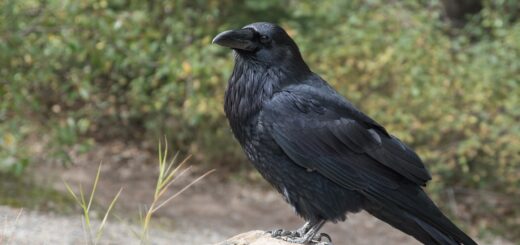Marsh Tit
The Marsh Tit, also known by its scientific name Parus palustris, is a small passerine bird that belongs to the family Paridae. This bird species is native to Europe and Asia, and it is known for its distinctive appearance, behavior, and habitat preferences. In this article, we will explore the fascinating world of the Marsh Tit, covering its physical characteristics, habitat, behavior, diet, and conservation status. By the end of this article, you will have a deeper understanding of this unique bird species and its importance in the ecosystem.
Physical Characteristics
The Marsh Tit is a relatively small bird, measuring around 12 centimeters in length with a wingspan of approximately 18-20 centimeters. It has a chubby appearance, with a round body and a short, stout bill. The plumage of the Marsh Tit is predominantly black on the head, throat, and upperparts, with a white patch on the nape of the neck. The underparts are a pale grayish color, and the wings and tail are a dark brownish-black. One of the most distinctive features of the Marsh Tit is its glossy blue-black cap, which sets it apart from other tit species.
When it comes to vocalizations, the Marsh Tit is known for its varied and complex song, consisting of a series of clear, ringing notes. Its calls include a sharp tsit or tseep sound, often repeated in rapid succession. The combination of its striking appearance and melodious songs makes the Marsh Tit a charming and sought-after bird species for birdwatchers and nature enthusiasts.
Feeding Behavior
The Marsh Tit is primarily an insectivorous bird, feeding on a wide variety of insects, spiders, and their larvae. It forages for food in the canopies of trees, using its agile and acrobatic movements to glean insects from the foliage and branches. In addition to insects, the Marsh Tit also consumes seeds, nuts, and berries, especially during the winter months when insect prey is scarce.
One interesting feeding behavior of the Marsh Tit is its habit of caching food. Before the onset of winter, these birds will store seeds and nuts in hidden locations, such as crevices in tree bark or the leaf litter on the forest floor. This caching behavior helps them survive during times of food scarcity, ensuring that they have a readily available food supply when foraging becomes more challenging.
Habitat and Distribution
The Marsh Tit is primarily found in deciduous and mixed woodlands, preferring damp, marshy areas with plenty of undergrowth and shrubbery. It is also known to inhabit riverine forests, wetlands, and parks with mature trees. The distribution of the Marsh Tit is widespread across Europe and Asia, with distinct subspecies found in different regions.
In Europe, the Marsh Tit is common in countries such as the United Kingdom, France, Germany, and Scandinavia. In Asia, it is found in countries like Russia, China, and Japan. Its habitat preferences make it well-suited to a variety of woodland environments, allowing it to thrive in different ecosystems and climatic conditions.
Conservation Status
The conservation status of the Marsh Tit is currently assessed as Least Concern on the International Union for Conservation of Nature (IUCN) Red List. This designation reflects the relatively stable population trend of the species across its range, as well as its ability to adapt to human-modified landscapes.
However, while the overall population of Marsh Tits appears to be healthy, there are localized threats and conservation challenges that need to be addressed. Habitat loss and fragmentation due to deforestation and urbanization pose significant risks to the species, as they rely on mature woodlands with dense undergrowth for nesting and foraging. Additionally, climate change and its associated impacts, such as extreme weather events and shifts in vegetation patterns, could affect the availability of suitable habitat for the Marsh Tit.
To ensure the long-term survival of the Marsh Tit, conservation efforts should focus on preserving and restoring its woodland habitats, implementing sustainable forest management practices, and raising awareness about the importance of biodiversity conservation. By addressing these key issues, we can help safeguard the future of this charming and ecologically valuable bird species.
Conclusion
The Marsh Tit is a captivating bird species with its striking appearance, melodious songs, and unique ecological role. Its presence in woodlands and wetlands adds to the richness of biodiversity, contributing to the functioning of ecosystems and providing valuable ecological services. By understanding the physical characteristics, feeding behavior, habitat preferences, and conservation status of the Marsh Tit, we gain insights into the complex and interconnected web of life in the natural world.
As we continue to appreciate and learn about the Marsh Tit, it is essential to recognize the importance of conservation efforts in safeguarding its future. By protecting the habitats of the Marsh Tit and addressing the threats it faces, we can contribute to the preservation of biodiversity and the maintenance of healthy, functioning ecosystems. The Marsh Tit serves as a reminder of the beauty and wonder of the natural world, inspiring us to take action in its defense and stewardship.
